#2: Examining the pinball

Greetings, dear ball rollers!
Welcome to The Ball is Wild, the pinball culture newsletter about the celebration of silver spheres and marvelous marbles. They could be starring in physical pinball machines, they may amaze us in videogames or they might come about in art or academic projects. They might be brand new, older or upcoming, mainstream or super-niche. You never know! What we do know though is that you don’t need to be an experty person to enjoy these write-ups. No insider knowledge or arcane pinball teachings needed. Just be curious and … ballsy! Let’s roll.
IN THIS SECOND EDITION:
Editorial: What even is a pinball?
Pinball in pop culture: The Pinball Supercut
On the road: Visiting one of the biggest pinball events
A rare sight: A cocktail pinball table with a rotating playfield
Videoballs: Xenosphere
Videoballs: Super Monkey Ball Banana Rumble
Up and coming: New ball rolling games in the making
EDITORIAL:
What even is a pinball?
Showing the pinball experience to someone who doesn’t know about it is pretty easy at first. That’s because watching pinball is a spectacle of lights, sounds, music and motion. Playing it in a basic way is almost self-explanatory (if not for how to start a game which can be a problem to newcomers). When people play their first games they either get entranced by all the sensory overload or put off by the many things that are going on at the same time. Either way, what they don’t experience in the beginning is the haptic part of pinball, a feel for the machine, the possibility of slighty shaking, moving and nudging it. Newcomers still lack a sense of weight towards the silverball getting shot around at the targets on the playfield and coming in contact with the flippers. That is what only gradually develops over time when someone continues playing.
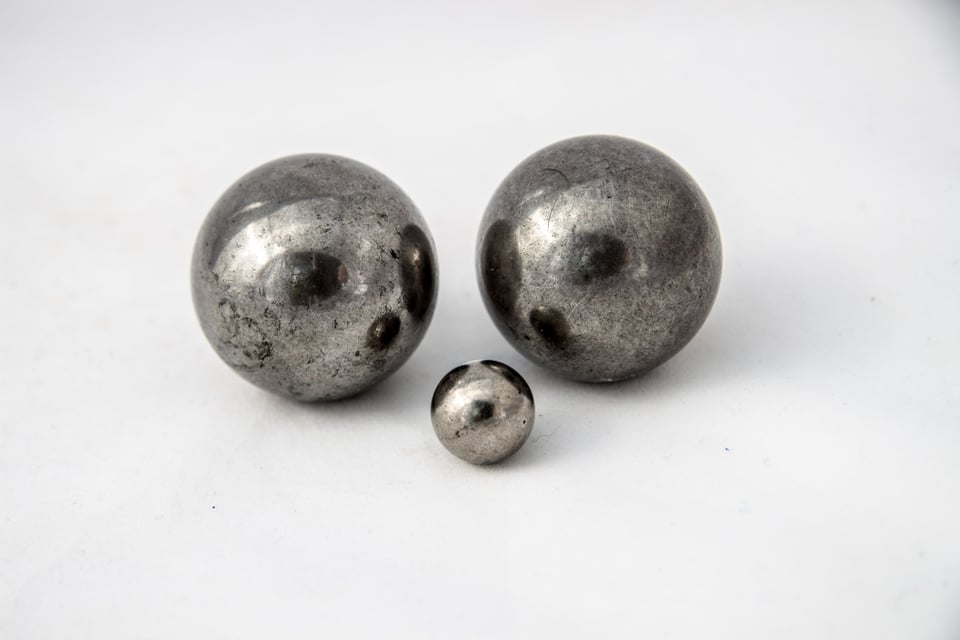
“You have to show them the ball itself, hand it over, let them feel it!”, suggested my partner when I put together a talk meant as a sort-of primer of what pinball as a cultural artefact is all about (it can be watched here). It’s true: Although pinball is entertaining, exciting and approachable, it can still be puzzling to many. The fact that you are indirectly controlling a steel ball with two or more electrically operated paddles makes for a simple game and yet it’s also indirect and almost a bit counterintuitive, if you think of it. So handing out pinballs can help to literally get a feeling for what the texture is like and how heavy the ball is. If you own a pinball machine and haven’t done this yet, try it out! (By doing so you can also show off the inner workings of the machine while you’re at it. Always impressive to newbies, and rightly so.)
I was intrigued lately thinking about the character, material and size of the ball used in pinball machines. What is it anyway? A smaller steel ball, sure. But what else? Turns out that in most cases, a pinball is made out of carbon steel but can also be chrome steel. Almost always it has a diameter of 1 1/16th inches (2,7 centimeters). There are some rare exceptions, for instance the famous Powerball used exclusively in The Twilight Zone machine (1993). It has the same size as a regular steel pinball but is made out of ceramic and thus lighter. One very odd case is Truck Stop (1988) which uses slightly smaller steel balls. Why? Because the company behind it inadvertently made the ramps of this particular machine too narrow and it was then cheaper to build/buy smaller silverballs instead of changing the design late in the process. You can read these information nuggets and many more pinball facts, stories and thoughts on flippers.be, clearly put together by a very resourceful individual from Belgium who runs this site for 20 years by now.

But the most intriguing fact in this regard is that the steel ball used in pinball machines is actually an integral part of the ball bearing technology which is found in basically every item or machine that uses rotating elements in order to reduce friction (please excuse this broad explanation as I myself am a layman when it comes to these things). The invention of the bearing happened a very long time ago: Apparently, the Ancient Egyptians already used it, the Roman Empire knew about its advantages, and Leonardo Da Vinci drew it. In the late 1800s, German entrepreneur and inventor Friedrich Fischer opened up the world’s first factory where ball bearings were built professionally, primarily for the first bicycle boom.
About 30 years later, imaginative builders came up with the idea that the ball bearing might also be a good fit for coin operated amusement machines. Of course, it wasn’t the only time when industrial technology and accessories received a secondary usage in the entertainment business but this case is certainly a curious one. It’s also tried and tested: If you ever thought about swapping the good ol’ silverballs with something different: There is not much else that has the same durability and visibility as silver steel balls. But you could go for another look (skin?) as there is at least one pinball parts online shop that sells custom black pinballs, and even used to have golden ones.

PINBALL IN POP CULTURE:
Where else can we spot the silverball?
The Pinball Supercut
Currently I am living in Montreal for some months where I very much enjoy the local pinball hotspot which is North Star Machines À Piastres, an amazing, laid-back pinball bar on the bustling Boulevard Saint-Laurent, one of the most important streets of the city. North Star co-founder Adam Kiesler had to jump through many hoops in the middle 2010s to make public pinball in the vicinity of alcoholic drinks legal again in Montreal. Which it hadn’t been throughout the decades before. But this is another story.
Here and now I want to recommend to you The Pinball Supercut, a 16-hour-plus edit of countless scenes out of movies and TV series that feature pinball machines, created by Mark Loeser and James Schidlowsky. The whole cut could be watched inside North Star and isn’t publicly available at the moment. But you can glimpse a tiny, 8 minutes and 40 seconds long version of it. Pinball Symphony (All-Scores Supercut) features old pinball backboxes and score reels and of course the corresponding bells and whistles as well as music and dialogue from the respective movies and series.
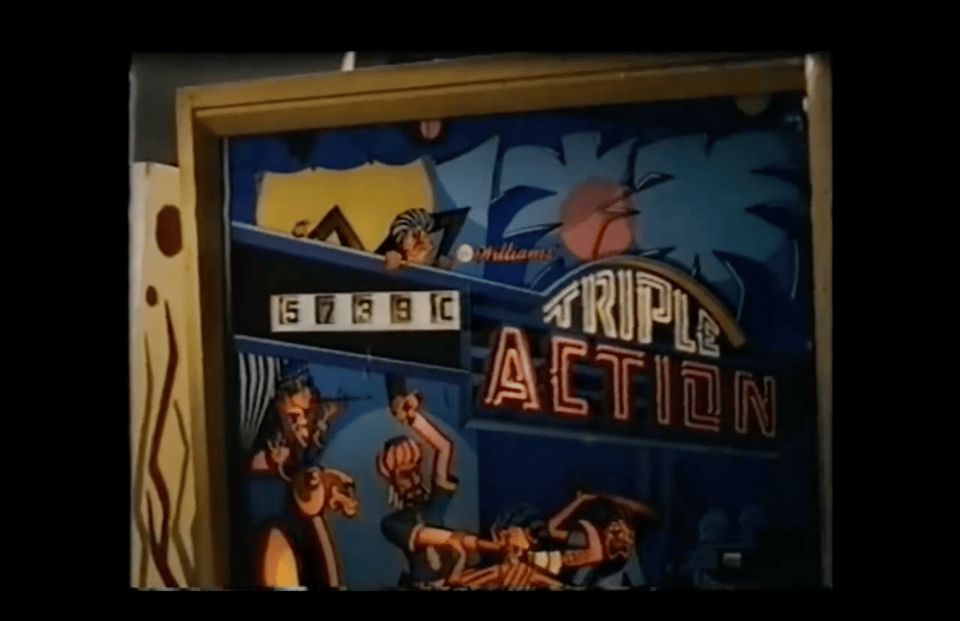
ON THE ROAD:
Visiting one of the biggest pinball events
During my stay in Quebec I figured I could also go to places that are not as far away as they would be if I’d be at home in Austria. So I recently went West to Edmonton, the capital of the province Alberta, participating in one of the largest pinball events and tournaments worldwide. YEGPIN, a name composed out of the city’s airport code and our game of choice, featured over 250 pinball machines in two big halls. Around 280 players registered for five different tournaments that took place throughout four full days of pinball play extravaganza.

Although familiar with smaller and mid-sized tournaments for a while now, YEGPIN was a little overwhelming for me at first. There are a lot of different procedures and rules going on which you have to get to know pretty quickly in order to properly follow your trail through the tournament(s). For example, there are certain websites you need to sign on that give you information on where you play and with whom. And of course you need to be aware of the respective schedule that updates you on what is going on when. I succeeded with this … not all of the time, let’s be honest. But I tried to keep up as best as I could. Were it not for a very friendly person from Ottawa, for instance, I’d missed my early bird playoff games at 8am in the morning on Saturday. Thanks again for the heads-up!
All in all, it was a great and social weekend. In the main tournament we always played in groups of four players on four machines from different eras. Each player was always inside a group that was active for at least an hour which makes for the perfect opportunity to get to know fellow players. Still, a pinball tournament of this size can be quite daunting even for seasoned players. Good thing YEGPIN head honcho Derek Thomson is a very friendly guy and has a great, communicative and professional team behind him. Protip though: Always travel and compete together with pinball friends when going to an event of that size!
A RARE SIGHT:
A cocktail pinball table with a rotating playfield
YEGPIN wasn’t really a showcase of pinball curiosities but if you looked closely there were some special machines around that you almost never see on display at an event or even out in the wilds. A case in point was the wonderfully strange octagon-shaped cocktail pinball table Rotation VIII (1978) that was playable for at least one evening during the event in Edmonton.
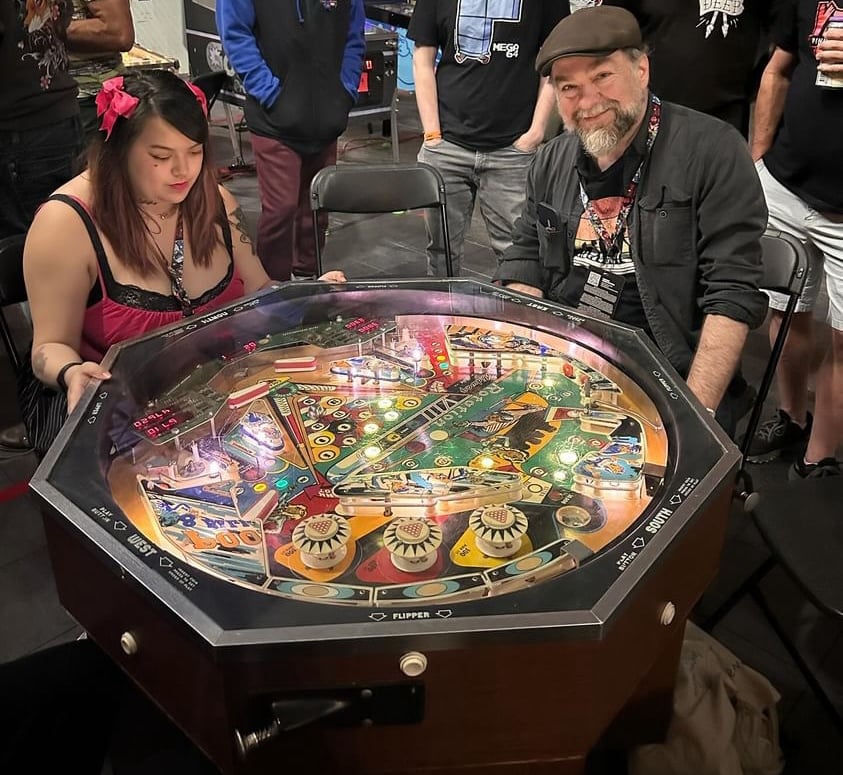
To play Rotation VIII, up to four players can sit down next to it and take up one of the four distinct spots. Everyone now has their own two flipper buttons and a plunger. The players take turns, as it’s common, but with a fabulous twist: The playfield rotates when the next player’s ball is due! So not even can you now finally safely rest your drink on the playfield glass for once (as it is flat and not tilted) but you don’t even need to move in order to play. It’s the pinball equivalent of the guy who configured his gaming setup so that he doesn’t need to get out of bed anymore. Comfy! But remember, folks: A great pinball performance needs a good stance and hence an upright standing position. For a casual afterhours chatter with pin geeks though it can’t get any better than with Rotation VIII.
VIDEOBALLS:
Pinball and pinball-like computergames
A mysterious journey through space
Xenosphere (Windows)
Xenosphere is the newest videogame by Nicklas Nygren aka Nifflas. He is a Swedish veteran indie game designer who is known for his whimsical and curious puzzle and platform games. His most recent releases are known to be wonderfully strange like the amazing Ynglet (2021) where you jump and float through colorful skies as a space dolphin.
In a similar vein, Xenosphere wants you to “drift, spin, dash, and golf your way in a journey through interstellar glyph space”, as the description lets us know. My first association wasn’t golf though but, you guessed it: pinball! I can’t play the game myself at the moment as it’s currently only available for Windows but I have the greatest confidence in recommending a Nifflas game by only having experienced the trailer and positive comments about it so far. Feel free to tell me how it plays!
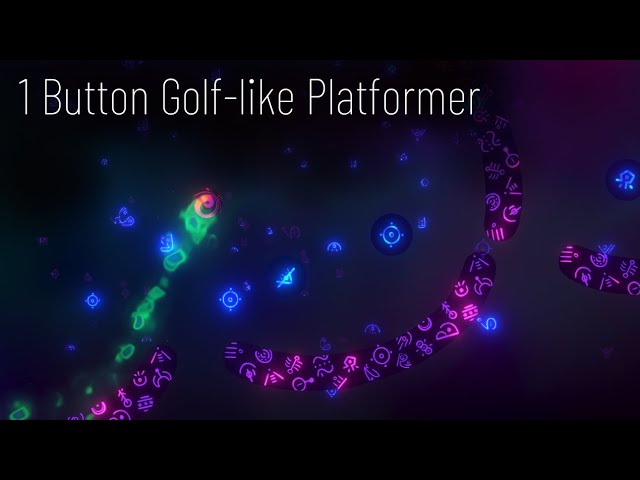
Little monkeys in Pokéballs
Super Monkey Ball Banana Rumble (Switch)
24 years ago, Sega released an arcade machine in Japan with a banana-shaped joystick. That was undoubtedly intentional as the original Monkey Ball (2000) was a ball rolling dexterity game with little big-eared cartoon monkeys inside hollow spheres. Very soon after, Super Monkey Ball (2001) arrived on the Nintendo GameCube and went on to become a successful game series for home and handheld consoles.
I always liked the Super Monkey Ball series but never really got much into it. This is also due to the fact that the development teams behind the different games have changed several times over the last 20 years. All the many iterations didn’t really went out of their way to innovate much on the initial gameplay experience. But Banana Rumble is a throwback to the original game as it’s also developed by the studio that created the first entries to the series. You can read more about it in this informative article on Polygon.

Super Monkey Ball, old and new, is some sort of pinball experience where you yourself are the ball instead of the flipper operator. It’s fun, fast and although simple in concept and design leaves enough space for experimentation. There are always surprising shortcuts in every level and you can also play with friends on your couch or online. The close relationship of the series with pinball culture is all-encompassing, featuring elements like lanes, ramps, bumpers and the likes constantly.
But as Banana Rumble is only available for the Switch at the moment, you have to decide on whether you want to pay 50 US dollars / euro for a game that should actually be situated within a 30-bucks space. That’s the infamous Nintendo pricing system for all of us to “enjoy”. Alternatively, you could of course dust off your old retro console that lies dormant in the basement and kick off some vintage monkey ball rolling action.
UP AND COMING:
New ball rolling games in the making
To wrap up this second edition of The Ball is Wild, let’s briefly dip into four videogame reveals that have been unleashed at us recently at different online game showcases. Amidst the many game announcements there were also some ball rolling and pinball titles that look promising.
Circulation does remind me of the wondrous and wonderful Cocoon (2023) which is itself not really a ball rolling game but a different-dimensions-within-magical-spheres experience. With both games you don’t really know where you are, what you are and what all of this is about. And yet it looks so intriguing. Circulation takes your ball-like protagonist on a curious journey through many metal contraptions. Sounds familiar, doesn’t it.
Cozy Marbles is the, well, cozy marble game that just wants you to relax. We can create our own tracks and watch the little balls roll about is all. Although the game boasts that one can also “create huge intricate marble machines”. Let’s see! There is already a demo version up for Windows. (By the way, more about those great contraptions that are marble machines in one of the upcoming issues of The Ball is Wild.)
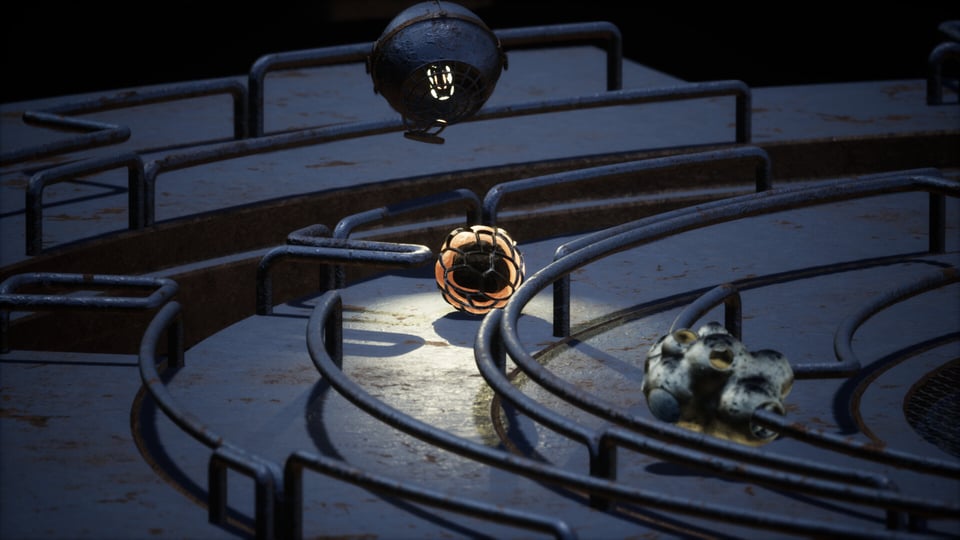
Whether Pinball Storm: Lokanta has much to do with what you would expect from pinball or pinball-like gameplay remains to be seen as it very much looks like a Vampire Survivors clone. There is “pinball” in the title still, so I keep my hopes up. It sure looks wild and chaotic, and the bullets seem to be more marble-like as compared to similar games. The title is slated for a 2024 release and also features a demo version for Windows.
Within this list, Pinball Spire is the upcoming video pinball game that I look forward to the most, and it also has a Windows demo at the ready. It’s an exploration puzzle game that features a classic 2D pinball look and gameplay but let’s you roll through many different tunnels and playfields as if you’d crawl through a labyrinthine dungeon. The soundtrack fits the simple but charming pixel art, and the balls have eyes. No, it’s not a horror thing (or is it?).
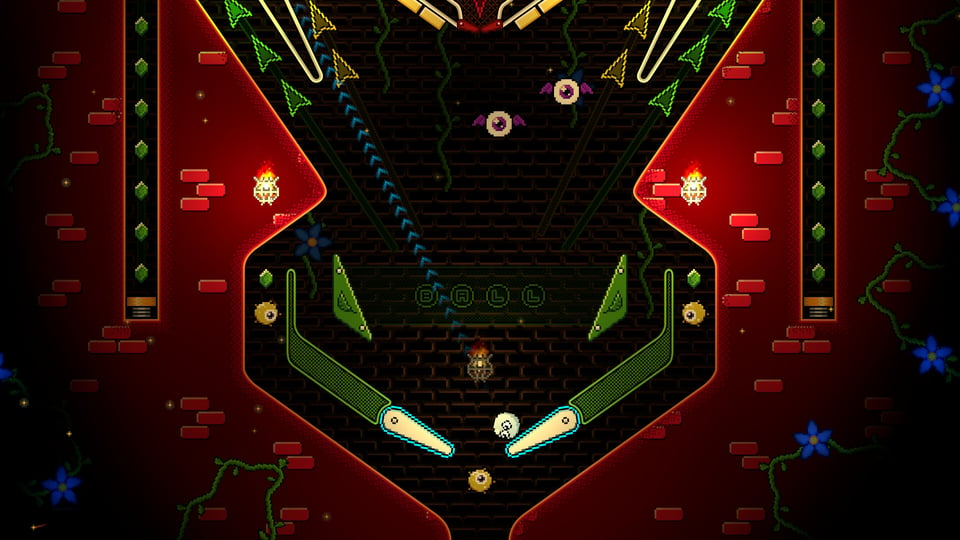
Thanks for reading!
What did you like?
I’m curious about what you think of this second edition of The Ball is Wild newsletter. Let me know by sending an email (just hit reply) or reach out on Bluesky, Mastodon, X or Instagram.
If you missed the first edition, you can find it here. General information about this newsletter and the person behind it is available at the front page.
If you like this project, it would mean a lot to me if you’d recommend it to family, friends, colleagues, acquaintances or whoever might be interested.
Issue #3 will be out in late July. Until then and wishing you great balls 🪩